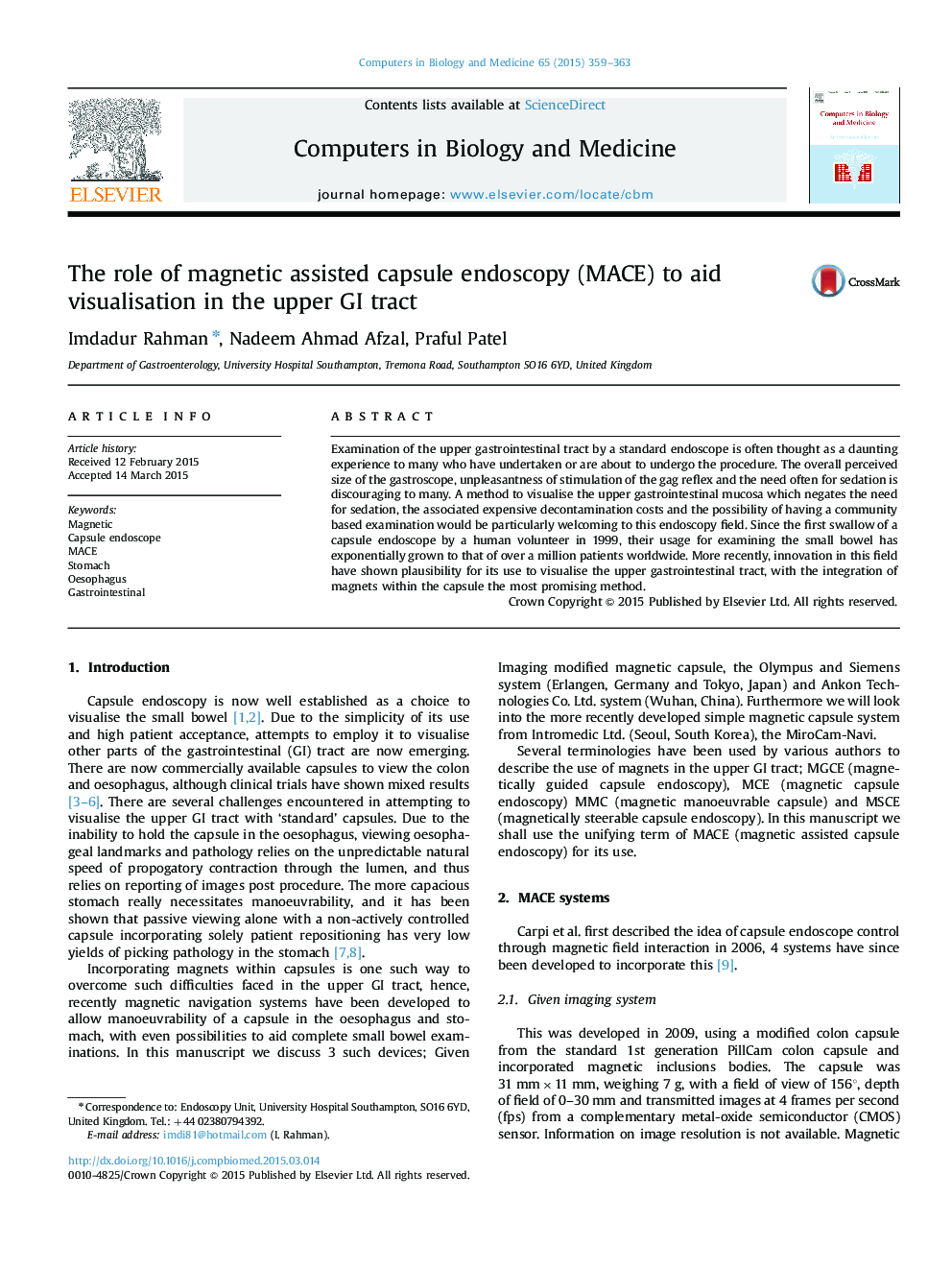| Article ID | Journal | Published Year | Pages | File Type |
|---|---|---|---|---|
| 6921179 | Computers in Biology and Medicine | 2015 | 5 Pages |
Abstract
Examination of the upper gastrointestinal tract by a standard endoscope is often thought as a daunting experience to many who have undertaken or are about to undergo the procedure. The overall perceived size of the gastroscope, unpleasantness of stimulation of the gag reflex and the need often for sedation is discouraging to many. A method to visualise the upper gastrointestinal mucosa which negates the need for sedation, the associated expensive decontamination costs and the possibility of having a community based examination would be particularly welcoming to this endoscopy field. Since the first swallow of a capsule endoscope by a human volunteer in 1999, their usage for examining the small bowel has exponentially grown to that of over a million patients worldwide. More recently, innovation in this field have shown plausibility for its use to visualise the upper gastrointestinal tract, with the integration of magnets within the capsule the most promising method.
Related Topics
Physical Sciences and Engineering
Computer Science
Computer Science Applications
Authors
Imdadur Rahman, Nadeem Ahmad Afzal, Praful Patel,
